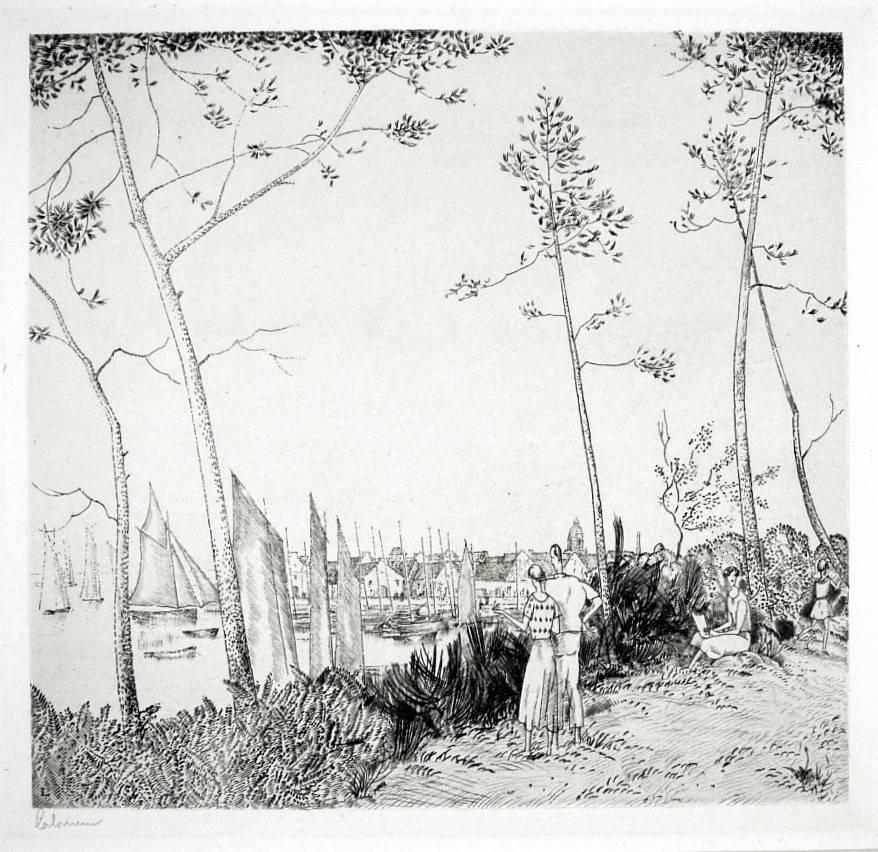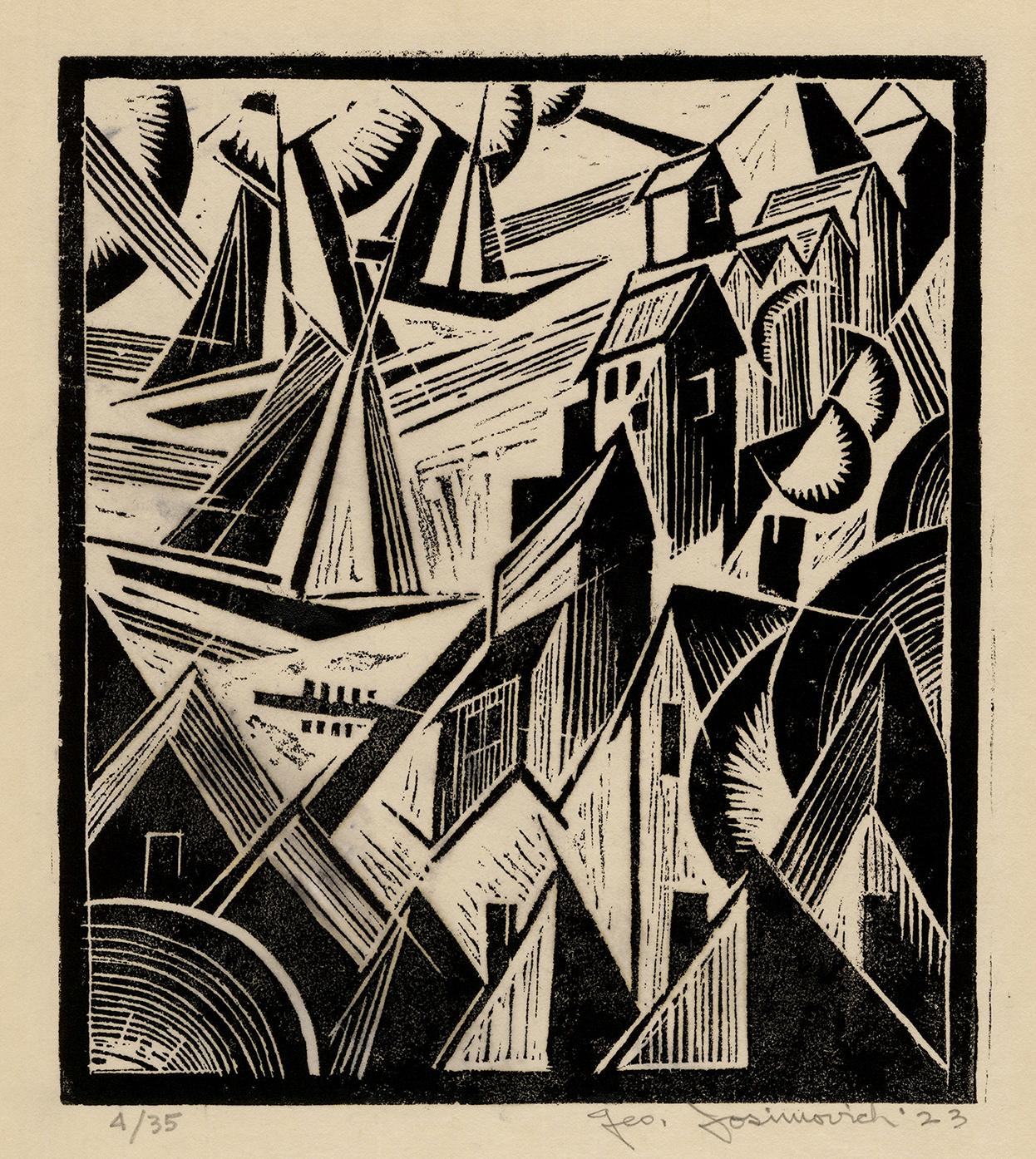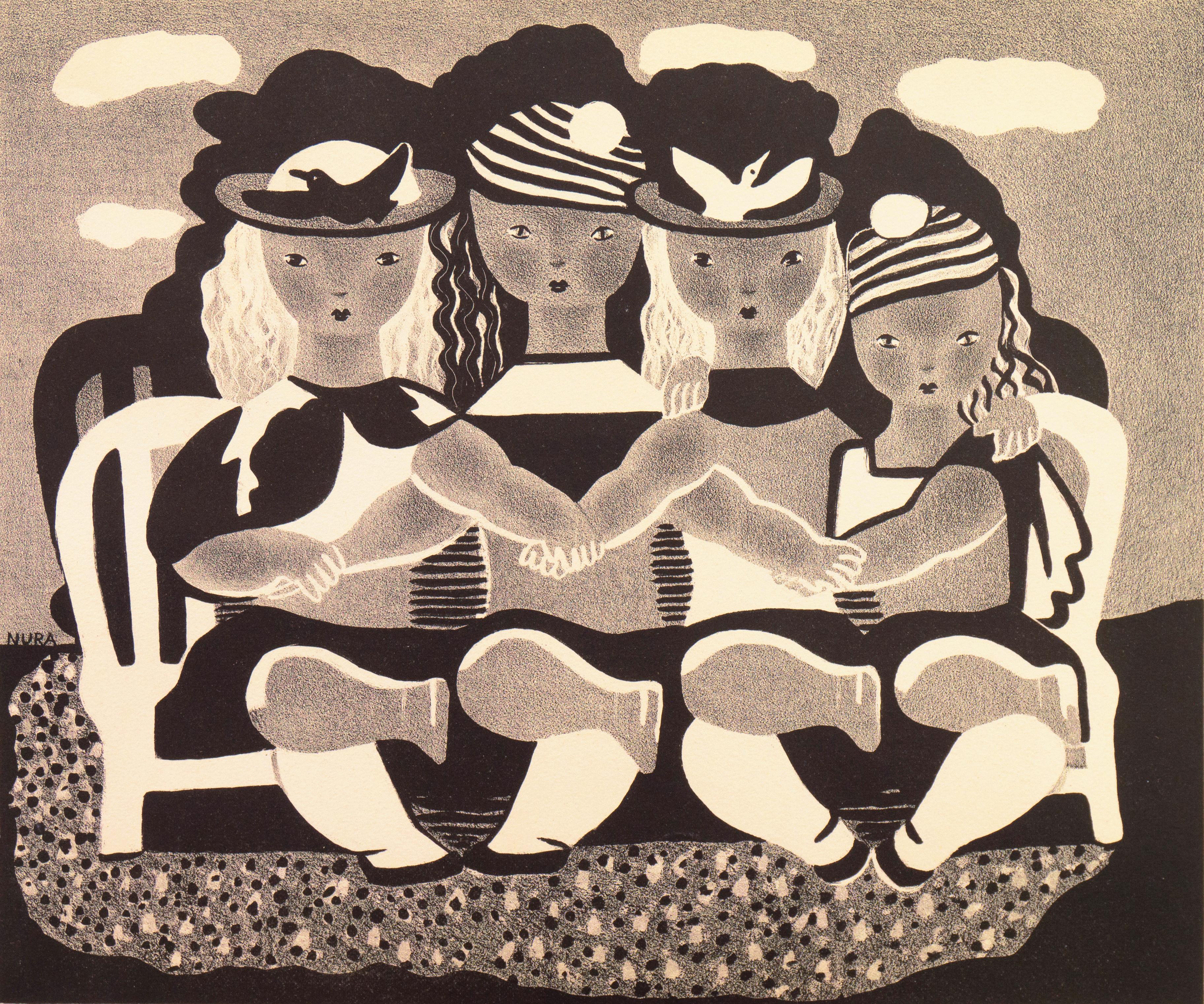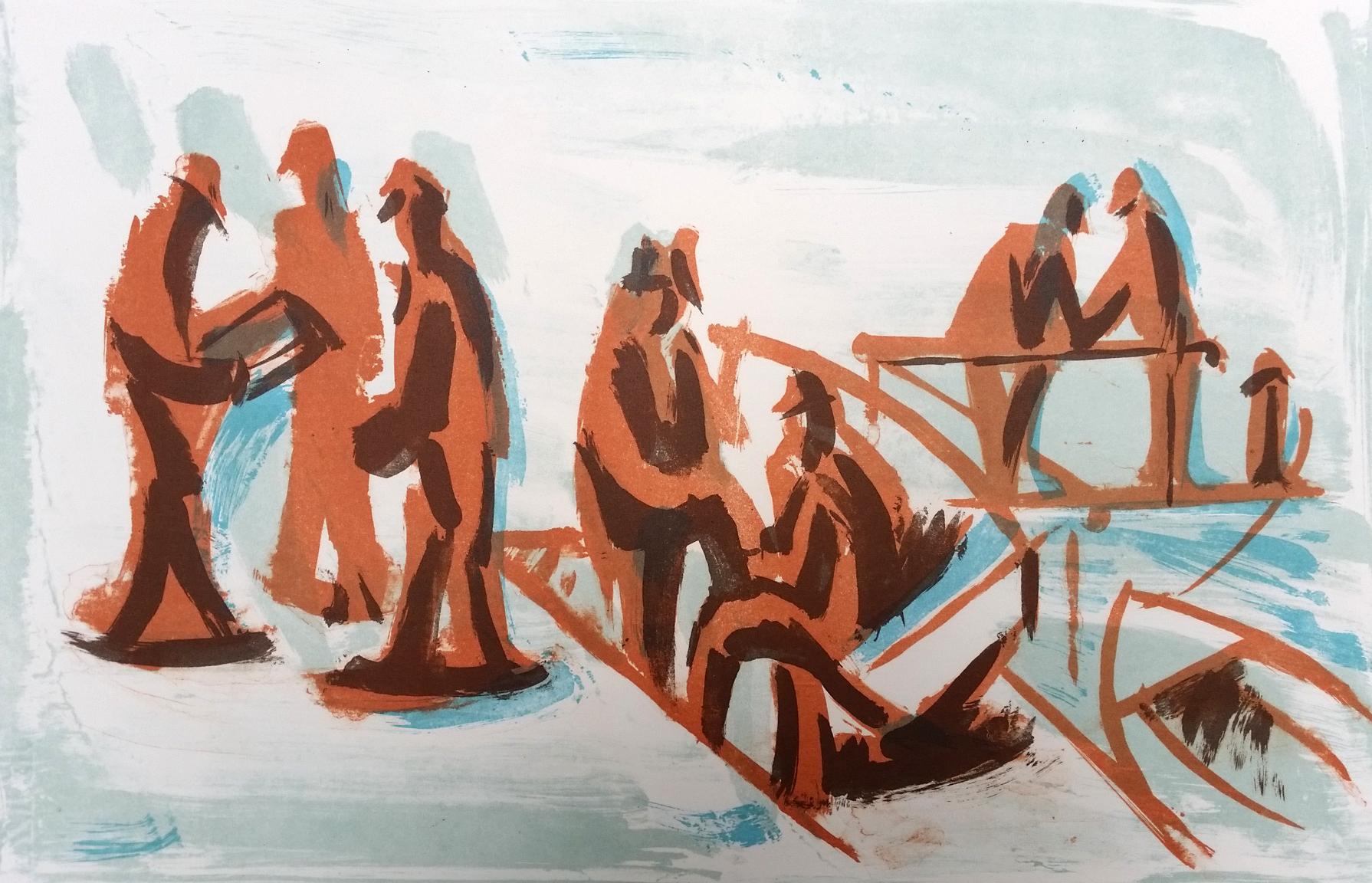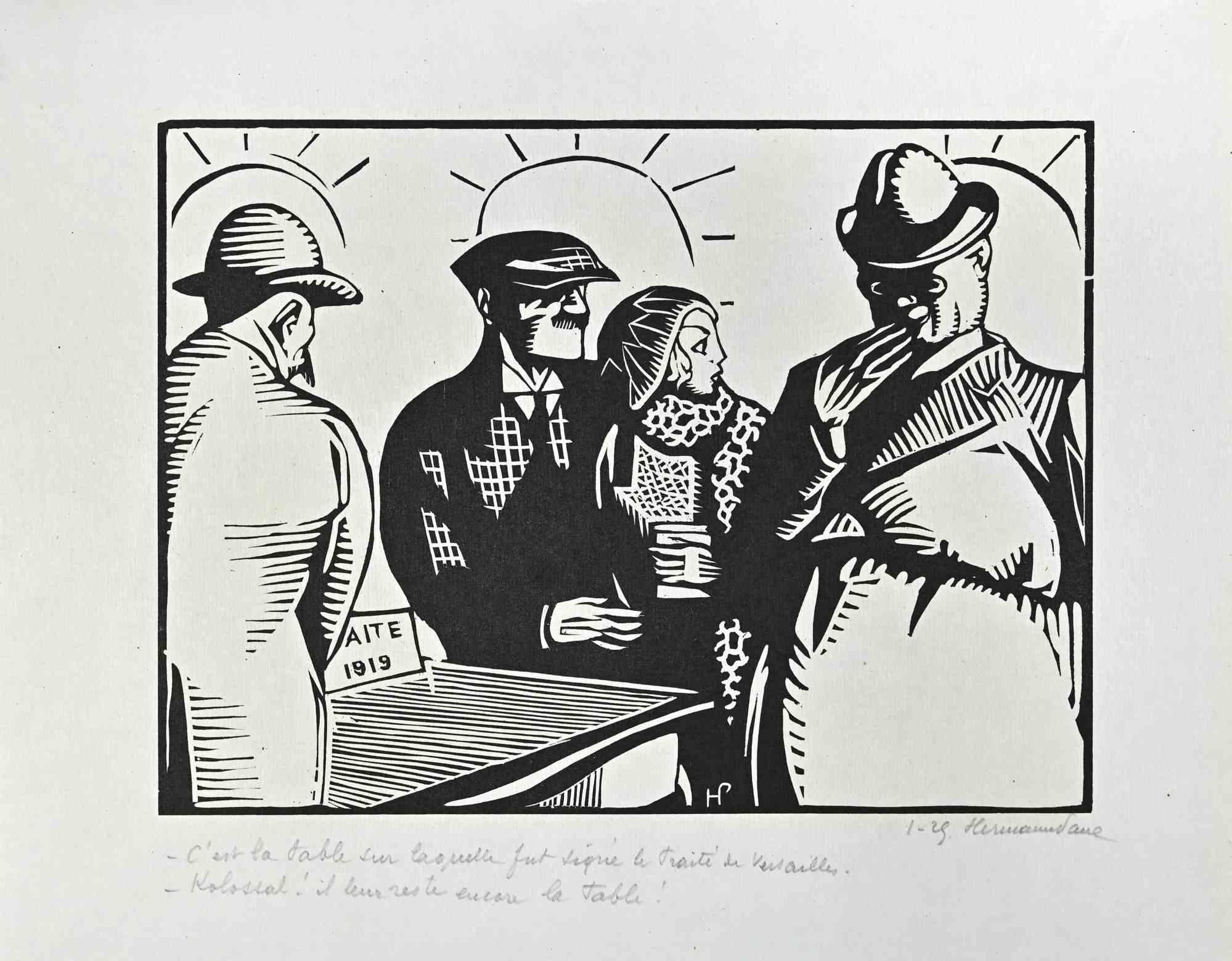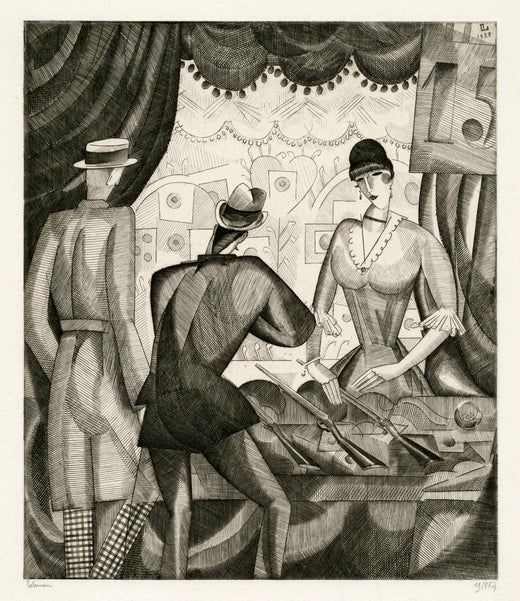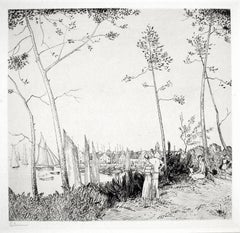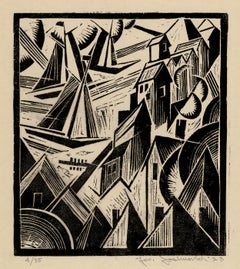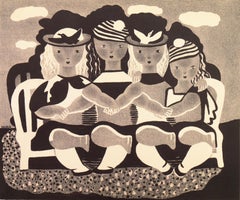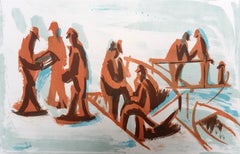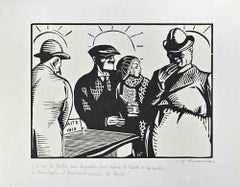Items Similar to Jeunes Filles Sur le Port
Want more images or videos?
Request additional images or videos from the seller
1 of 2
Jean-Emile LaboureurJeunes Filles Sur le Port1920
1920
$1,200
£918.09
€1,049.98
CA$1,708.70
A$1,850.72
CHF 980.22
MX$22,390.97
NOK 12,322.94
SEK 11,487.60
DKK 7,841.76
About the Item
Jean-Emile Laboureur, Jeunes Filles Sur Le Port, 1920, engraving, signed in pencil [also initialed and dated in the plate]. Reference: Godefry, Sylvain Laboureur 200, second state of two. An artist’s proof apart from the edition of 85 in this state; there were about 110 impressions printed in all before the plate was cancelled. In pristine condition, the full sheet with deckle edges, 6 x 5 3/8, the sheet 11 x 9 inches, archival mounting.
A fine clear impression.
Jean-Emile Laboureur was born in Nantes in 1877. He traveled to Paris in 1895 intending to study law at the Sorbonne, but found himself drawn to the nearby famed Academie Julian, and although he never officially matriculated there, he became immersed in the Parisian art scene. The great wood engraver Auguste Lepere taught him woodcutting, which initiated Laboureur in an involvement in printmaking that would extend through his career. In 1886 he met Toulouse Lautrec, who influenced Laboureur’s emerging aesthetic style, as did the work of Odilon Redon, Bonnard, and perhaps most notably Felix Vallotton, who became a close colleague, and whose woodcut work often bears a close relationship to Laboureur’s.
Laboureur traveled widely, staying for periods in the US and London, and studying classic art and printmaking in Italy and Germany. Although he had moved back to Paris by 1910, a time when analytical cubism was emerging in the work of Picasso and Braque, he continued working in an abstract, modernist mode, waiting until about 1913 or shortly thereafter to invent a cubist idiom all his own. Cubism remained an important theme for Laboureur, a theme he varied, sometimes using it as a strong design or compositional component, as in this engraving, sometimes only as a subtle background element. His experiments with engraving, started about 1915, began perhaps because of the difficulty of carrying complicated etching materials while working as an interpreter in the British Army, but were also based on his familiarity with the old masters, who typically worked in engraving.
Few modern artists use engraving, for although it doesn’t require much equipment, it is far more difficult and time consuming than etching. But engraving became his method, and the clear, clean engraving line seemed to complement Laboureur’s cubism. This happy marriage of cubism and engraving is demonstrated in Jeunes Filles Sur Le Port.
- Creator:Jean-Emile Laboureur (1877-1943, French)
- Creation Year:1920
- Medium:
- Movement & Style:
- Period:
- Condition:
- Gallery Location:New York, NY
- Reference Number:1stDibs: LU51531453923
Jean-Emile Laboureur
Jean Émile Laboureur, born in Nantes on 16 August 1877 and died in Kerfalher in Morbihan on 16 June 1943, was a French painter, draughtsman, engraver, aquafortist, lithographer and illustrator. Author of numerous engravings with burin, in individual plates or for books, he illustrated nearly eighty books, often by contemporary authors such as André Maurois, Jean Giraudoux, Colette, André Gide, Paul-Jean Toulet, Maurice Maeterlinck or François Mauriac. A painter of genre paintings, landscapes, animated or not, still lifes, he also created some frescoes and sculptures. His works are kept in several national and provincial museums. He founded or chaired associations of independent artists.
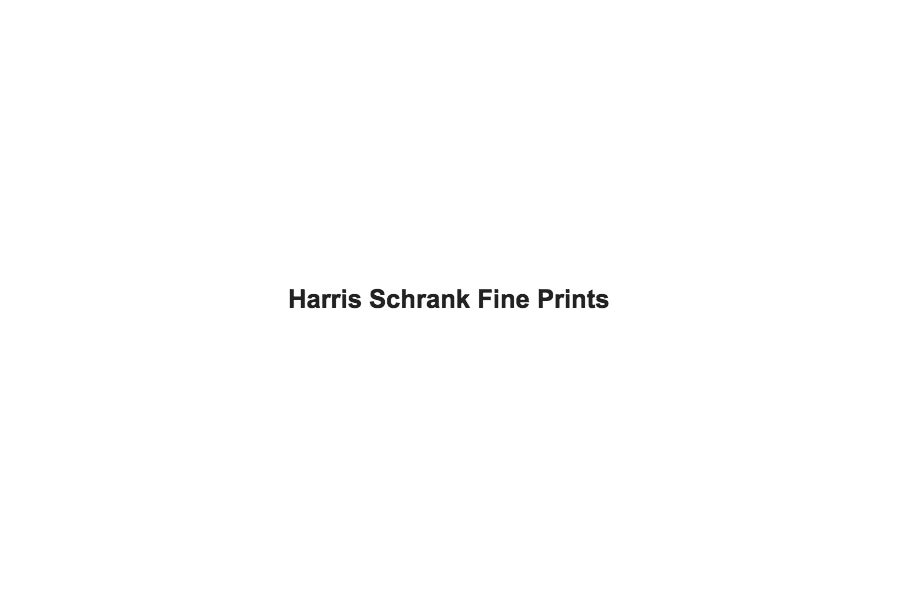
About the Seller
4.9
Recognized Seller
These prestigious sellers are industry leaders and represent the highest echelon for item quality and design.
Established in 2000
1stDibs seller since 2016
108 sales on 1stDibs
Typical response time: 9 hours
Associations
International Fine Print Dealers Association
- ShippingRetrieving quote...Shipping from: New York, NY
- Return Policy
More From This Seller
View AllLa Promenade Sur Le Port
By Jean-Emile Laboureur
Located in New York, NY
Jean-Emile Laboureur (1877-1943), La Promenade Sur Le Port, 1933, engraving, signed in pencil lower left. Reference: Godefry 482, Sylvain Laboureur 482, second state (of 2); from the...
Category
1930s Modern Landscape Prints
Materials
Engraving
Sur la Marne
By Jean-Emile Laboureur
Located in New York, NY
Jean-Emile Laboureur (1877-1943), Sur la Marne, engraving, 1924, signed in pencil lower right [with the initial lower right in the plate]. Reference: S. Laboureur 277, third state (o...
Category
1920s Cubist Figurative Prints
Materials
Engraving
Negres Americains a Saint-Nazaire
By Jean-Emile Laboureur
Located in New York, NY
Jean-Emile Laboureur (1877-1943), Negres Americains a Saint-Nazaire, 1917-1920, engraving on cream wove paper, signed in pencil lower left, titled lower left margin edge, and numbere...
Category
1910s Cubist Figurative Prints
Materials
Engraving
La Petite Plage
By Jean-Emile Laboureur
Located in New York, NY
Jean-Emile Laboureur (1877-1943), La Petite Plage, 1926, etching and engraving, signed in pencil lower left [inscribed lower margin as a trial proof; also wi...
Category
1920s Cubist Figurative Prints
Materials
Engraving, Etching
Le Promenade au Phare
By Jean-Emile Laboureur
Located in New York, NY
Jean-Emile Laboureur (1877-1943), Le Promenade au Phare, engraving, 1925, signed in pencil lower left and numbered lower right (24/70) [with the initial in the plate lower left]. Ref...
Category
1920s Cubist Landscape Prints
Materials
Engraving
La Fille aux Oies
By Jean-Emile Laboureur
Located in New York, NY
Jean-Emile Laboureur (1877-1943), La Fille aux Oies, engraving, 1916, signed in pencil lower left, numbered (4/40) lower right and inscribed “imp,” also titled lower left margin edge...
Category
1910s Cubist Figurative Prints
Materials
Engraving
You May Also Like
Harbor with Sailboats — Early 20th-Century Modernism
By George Josimovich
Located in Myrtle Beach, SC
George Josimovich, Untitled (Harbor with Sailboats) ', linocut, 1923, edition 35. Signed, dated, and annotated '4/35' in pencil. Initialed 'G J' in ...
Category
1920s American Modern Figurative Prints
Materials
Linocut
'Sisters', Paris, Salon d'Automne, New York, Art Deco, AIC, ASL, Woman Artist
By Nura Ulreich
Located in Santa Cruz, CA
Signed center left, 'Nura' for Nura Woodson Ulreich (American, 1899–1950) and created circa 1935; additionally stamped, verso, with certification of authenticity.
An early twentieth...
Category
1930s Art Deco Figurative Prints
Materials
Paper, Lithograph
Passersby on the Port
By Jean Hélion
Located in Saint Ouen, FR
Lithograph of the artist Jean Hélion.
1965
Signed in pencil and numbered on 50ex in pencil by the artist.
Dimensions 38 x 53 cm
Support: Vellum Rives paper
In excellent condition!
PR...
Category
1960s Figurative Prints
Materials
Lithograph
Figures - Drawing by Hermann Paul - Early 20th Century
Located in Roma, IT
Figures is an Original China Ink Drawing realized by Hermann Paul (1864-1940).
Good condition on a white paper.
Hand-signed and titled on the lower margin.
Hermann René Georges. ...
Category
Early 20th Century Modern Figurative Drawings and Watercolors
Materials
Paper, Ink
Vintage Fine Art - Women at Dock
By JP Tertre
Located in Houston, TX
Engrossing black and white fine art lithograph of several village women sitting at the docks and appearing to look out to sea in wait of returning seamen by artist JP Tertre, circa 1...
Category
1960s Figurative Prints
Materials
Ink, Paper
On the Beach (Coney Island, New York) — 1930s Graphic Modernism, WPA
By Lou Barlow
Located in Myrtle Beach, SC
Lou Barlow (Louis Breslow), 'On the Beach' (Coney Island) wood engraving, c. 1937, edition c. 25. Signed and titled in pencil. Stamped 'FEDERAL ART PROJECT NYC WPA' in the bottom left margin. A fine, richly-inked impression, with all the fine lines printing clearly, on cream wove paper, with full margins (1 1/2 to 3 inches), in excellent condition. Matted to museum standards, unframed. Scarce.
Image size 11 x 8 1/8 inches; sheet size 16 x 11 3/8 inches.
Created during the Great Depression for the Works Progress Administration (WPA), Federal Art Project, New York City.
Impressions of this work are in the permanent collections of the Amon Carter Museum of Art, Illinois State Museum, and the New York Public Library.
ABOUT THE IMAGE
Due to Coney Island's proximity to Manhattan, Brooklyn, and other New York boroughs, it began attracting vacationers in the 1830s and 1840s. Most of the vacationers were wealthy and went by carriage roads and steamship services that reduced travel time from a formerly half-day journey to two hours. By the late 1870s, the development of Coney Island's amusement park attractions and hotels drew people from all social classes. When the Brooklyn Rapid Transit Company electrified the steam railroads and connected Brooklyn to Manhattan via the Brooklyn Bridge at the beginning of the 20th century, Coney Island turned rapidly from a resort to an accessible location for day-trippers seeking to escape the summer heat in New York City's tenements. In 1915, the Sea Beach Line was upgraded to a subway line, and the opening of the Stillwell Avenue station in 1919 ushered in Coney Island's busiest era. On the peak summer days, over a million people would travel to Coney Island. In 1937, New York City purchased a 400-foot-wide strip of land along the shoreline to allow the boardwalk to be moved 300 feet inland. At this point, Coney Island was so crowded on summer weekends that parks commissioner Robert Moses...
Category
1930s American Modern Figurative Prints
Materials
Woodcut
More Ways To Browse
Art Deco Engraving
Andy Warhol Electric Chair Art
Antique Lawyer Prints
Arnold Friberg
Atoms For Peace
Bill Katz
Book Of Job William Blake
Book Of Mormon
Botero Fernando Lithograph
Botero Lithograph
Carlo Gregori
Christian Dior Vintage Posters
Dali Bullfight
Dali Chevalier
Dali Frank Hunter
Dali Peter
Dali Surrealist Flowers
Dali Vitraux
